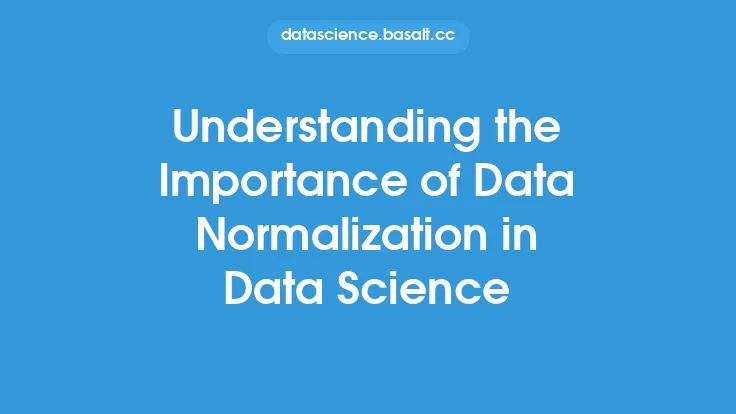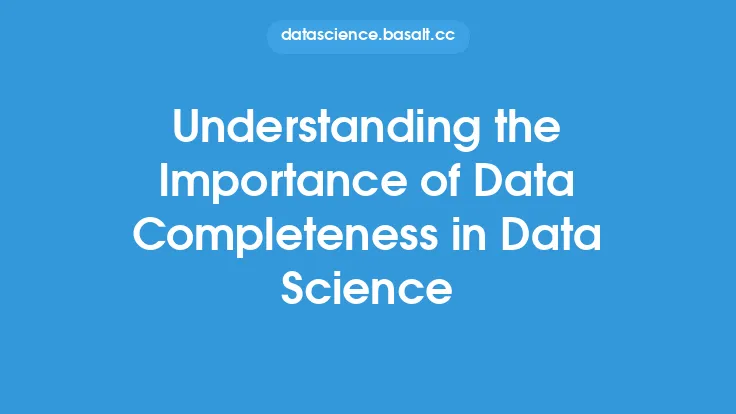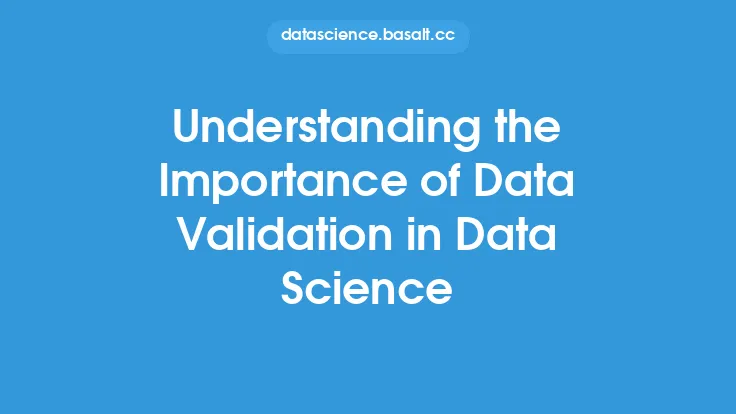Data science is a field that relies heavily on the quality of the data used to train models, make predictions, and inform business decisions. One of the most critical steps in ensuring the quality of data is data cleansing, also known as data cleaning or data scrubbing. Data cleansing is the process of identifying, correcting, and transforming inaccurate, incomplete, or inconsistent data into a more reliable and consistent format. In this article, we will delve into the importance of data cleansing in data science, its benefits, and the techniques used to achieve it.
Introduction to Data Cleansing
Data cleansing is an essential step in the data science workflow, as it directly impacts the accuracy and reliability of the insights and models generated from the data. The goal of data cleansing is to ensure that the data is accurate, complete, and consistent, which is critical for making informed business decisions. Data cleansing involves a series of steps, including data profiling, data validation, data transformation, and data quality checking. These steps help to identify and correct errors, inconsistencies, and inaccuracies in the data, resulting in a high-quality dataset that can be used for analysis and modeling.
Benefits of Data Cleansing
The benefits of data cleansing are numerous and significant. Some of the most important benefits include improved data accuracy, increased data consistency, and enhanced data reliability. Data cleansing also helps to reduce errors and inconsistencies in the data, which can lead to incorrect insights and models. Additionally, data cleansing can help to improve the efficiency of data analysis and modeling, as clean data requires less processing time and resources. Furthermore, data cleansing can help to increase customer satisfaction, as accurate and reliable data can lead to better decision-making and improved business outcomes.
Data Cleansing Techniques
There are several data cleansing techniques used in data science, including data profiling, data validation, data transformation, and data quality checking. Data profiling involves analyzing the data to identify patterns, trends, and correlations, as well as to detect errors and inconsistencies. Data validation involves checking the data against a set of rules and constraints to ensure that it is accurate and consistent. Data transformation involves converting the data into a more suitable format for analysis and modeling, such as aggregating data or converting data types. Data quality checking involves verifying the accuracy and consistency of the data, as well as identifying and correcting errors and inconsistencies.
Data Cleansing Tools and Technologies
There are several data cleansing tools and technologies available, including open-source software, commercial software, and cloud-based platforms. Some popular data cleansing tools include Excel, SQL, and Python libraries such as Pandas and NumPy. These tools provide a range of data cleansing functions, including data profiling, data validation, data transformation, and data quality checking. Additionally, there are several cloud-based platforms available that provide data cleansing services, including Amazon Web Services, Microsoft Azure, and Google Cloud Platform. These platforms provide a range of data cleansing tools and technologies, including machine learning algorithms and data quality metrics.
Challenges and Limitations of Data Cleansing
Despite the importance of data cleansing, there are several challenges and limitations associated with it. One of the biggest challenges is the complexity of the data, which can make it difficult to identify and correct errors and inconsistencies. Additionally, data cleansing can be a time-consuming and labor-intensive process, requiring significant resources and expertise. Furthermore, data cleansing can also be limited by the quality of the data, as poor-quality data can be difficult to clean and transform. Finally, data cleansing can also be impacted by the availability of resources, including personnel, equipment, and budget.
Best Practices for Data Cleansing
To ensure effective data cleansing, there are several best practices that should be followed. First, it is essential to have a clear understanding of the data and its limitations, as well as the goals and objectives of the data cleansing process. Second, it is critical to use a combination of automated and manual data cleansing techniques, as automated techniques can help to identify and correct errors and inconsistencies, while manual techniques can provide a more detailed and nuanced understanding of the data. Third, it is essential to validate and verify the data cleansing process, to ensure that the data is accurate and consistent. Finally, it is critical to document the data cleansing process, to provide a clear and transparent record of the steps taken to clean and transform the data.
Conclusion
In conclusion, data cleansing is a critical step in the data science workflow, as it directly impacts the accuracy and reliability of the insights and models generated from the data. The benefits of data cleansing are numerous and significant, including improved data accuracy, increased data consistency, and enhanced data reliability. There are several data cleansing techniques, tools, and technologies available, including data profiling, data validation, data transformation, and data quality checking. However, data cleansing can also be challenging and limited, requiring significant resources and expertise. By following best practices and using a combination of automated and manual data cleansing techniques, it is possible to ensure effective data cleansing and improve the quality of the data.





